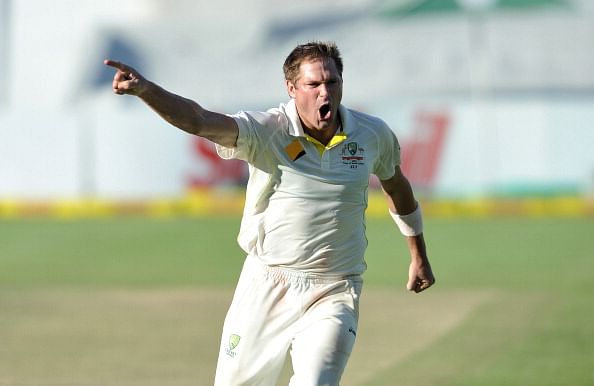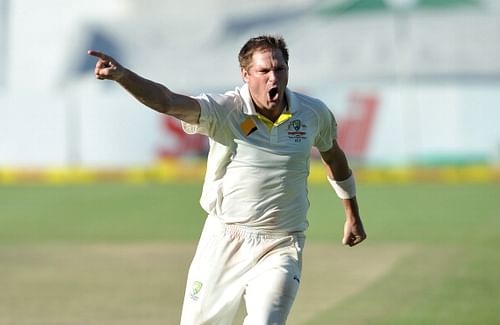
Crooked knees, creaking jaws and an indefatigable spirit

Ryan Harris celebrates after picking up the last South African wicket on Wednesday
Courage, a lot of us would like to believe, is an attractive abstract that enjoys our attention and affection for better part of our languid lives, but quite like the proverbial redolent breeze immortalized in a host of romantic renditions, it makes its presence felt on few, fleeting occasions. Saner souls have spent half their years and better part of their vocal chords in making us believe -with recurring futility- that courage is not exactly riding a motor bike full throttle. Nor does courage entirely encapsulate the thrill of dodging nonchalant stray dogs and sleepy watchmen to meet your infatuation for a moment of ephemeral eternity.
Courage, semantics aside, is what played out in Newlands on March 5, 2014. Ryan Harris, at 34 years of age, is not what you would classify as young. But unlike youth, courage goes beyond strength in bones and spring in step, quite literally in Harris’ case. With a knee whose creaks resonated across Cape Town, Harris ran in to do the job. That he managed to finish it must be seen as a tantalizing garnish on an equally sumptuous fare; nothing more, no less.
Harris’ biggest victory is not the 245-run win he secured for Michael Clarke, it’s the fact that he practiced, and personified courage in its entirety that will go down as perhaps world cricket’s most famous act of courage post Anil Kumble of 2002 vintage.
While the sight of Kumble sending down 14 overs on the trot – including taking the wicket of Brian Lara – invoked images of Colin Cowdrey coming out to bat with a broken hand against West Indies in 1963, or that of Australian Rick McCosker’s daredevilry with a broken jaw in the Centenary Test at MCG, to many of us, it was as special as the sight of a teenage phenomenon famously saying those everlasting words one evening in Sialkot. Yes, the little man and courage can’t be too alienated after all.
In 1999, he battled back spasms to carve arguably his best essay in Test cricket in Chennai. Also in 1999, he whacked an emotional 140 in a World Cup game against Kenya soon after returning from his father’s funeral. Courage was one of the many little things that Sachin RameshTendulkar personified.
While there is no calibrated yardstick to measure what entails more courage- a physical pain or an emotional extremity- what is certain is that both examinations are the definitive indicator of one’s character. Virat Kohli, the brash new prince criticised more for his demeanour than he is praised for his deeds, is another man who took emotional blow on his chin and decided not to make a theatre out of it.
Kohli was batting for Delhi in his debut Ranji season against Karnataka, trying to stave off follow-on. He got the news of his father’s demise at 3 in the morning, and the overnight batsman, then at 40, decided to bat on. He scored 50 more before heading home. He was a changed man thereafter, his mother has claimed on various occasions. Less than two years hence, he led India to U-19 World Cup win. Within six months since that memorable Kuala Lumpur romp, Virat made it to the Indian dressing room. If courage ever needed an endorsement, Virat could well be its fresh face.
Talking cricket and courage, can Graeme Smith be too far behind? Biff did an encore on Malcolm Marshall’s revered one-handed batting when he came out to bat to standing ovation at the SCG. Now Smith, by no account was playing his last match, nor was he ever a batsman who would send mobs on an adrenalin overdrive. With an ungainly stance and a limited off-side repertoire, Smith was as unlikely an opener as they come. Except that he came in at number 11 on January 7, 2009 with a fractured left hand and a numb right arm.